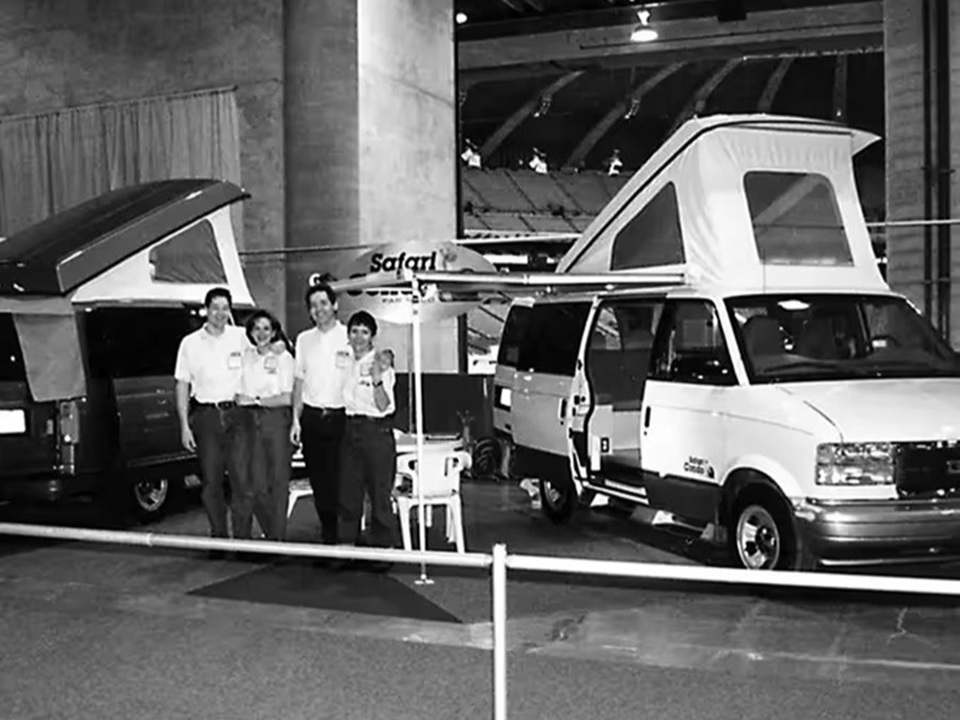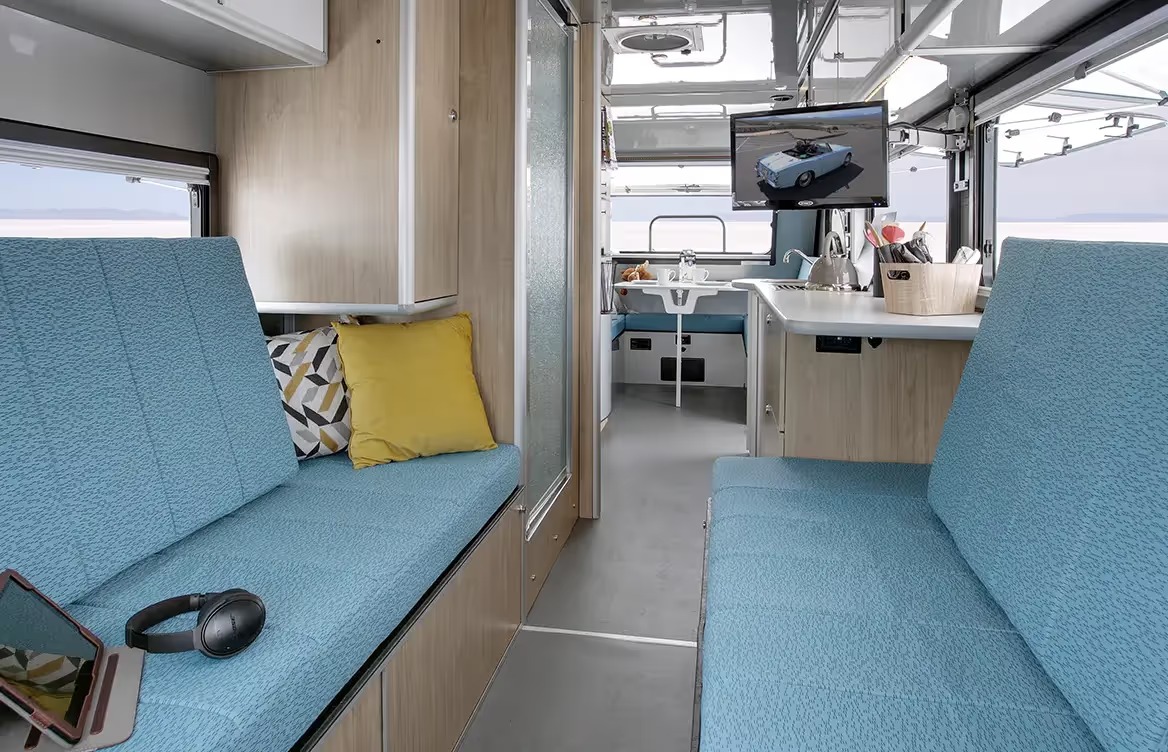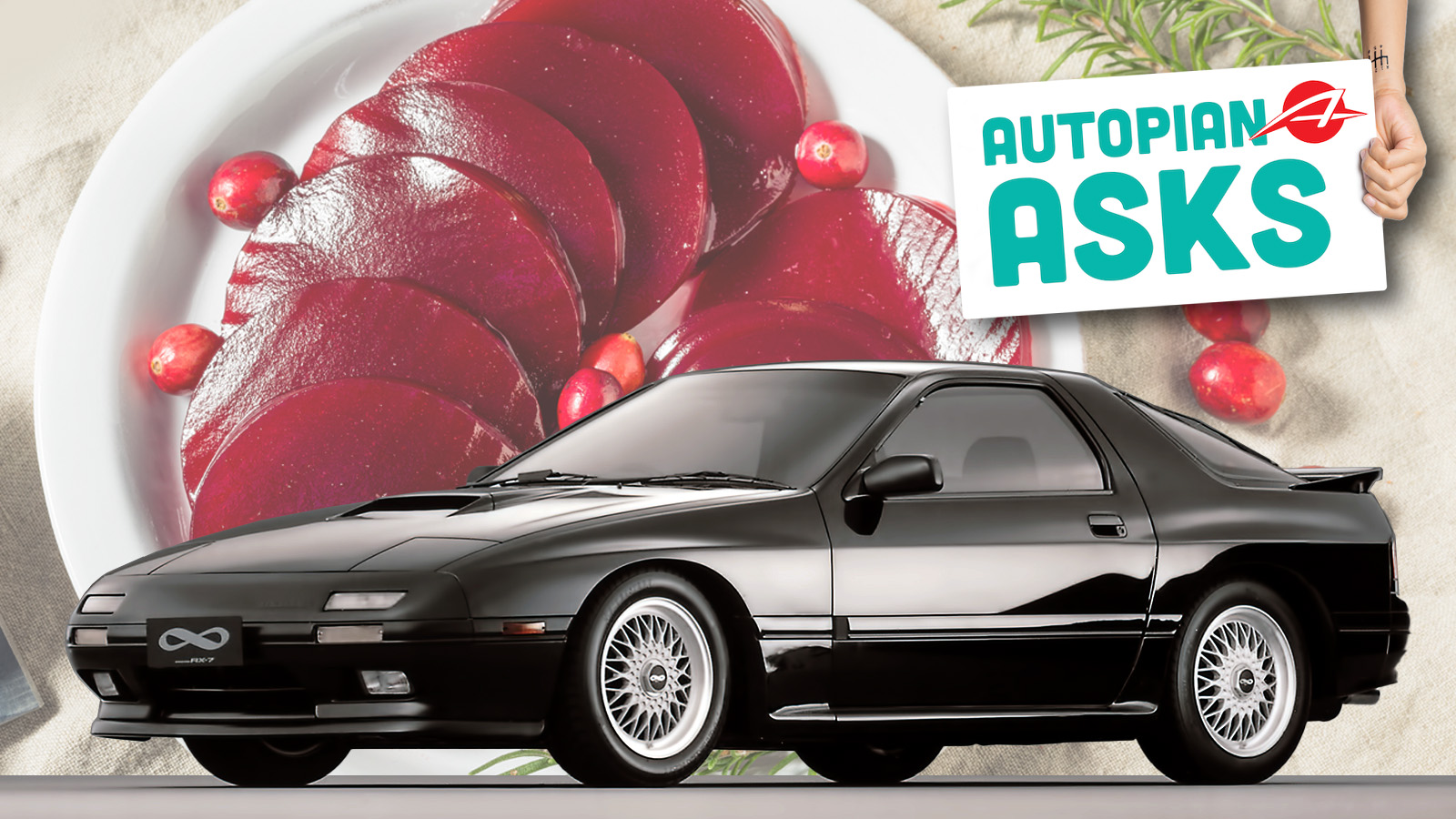One of the biggest problems with many campers is that all of the great moments that you make with your family can be soured by quality issues. Nobody likes stepping into their expensive camper and feeling a soft floor or seeing a water stain that wasn’t there before. One company thinks it has the solution by ditching the tropical plywood and rubber roofs that the industry loves. This is the 2026 Safari Condo Alto F2414, and it’s supposed to be the camper of the future with metal, plastic, and an unloaded weight that’s impressively low.
I recently published a take that said that the RV industry needs to move away from its dependence on lauan. Sure, lauan is cheap, water-resistant, and can be easily turned into infinite shapes, but it’s not the best building material. Once water finds its way into a lauan sandwich, it’ll sit there, fester, and eventually ruin the lauan and whatever’s stuck to it. Sadly, you as an RV owner likely won’t notice until thousands of dollars of damage have been caused.
Typical RV construction also leaves lots of holes and seams that may leak even if you try your hardest to keep up with maintenance. Then there’s the rubberized roof, which works great, until it doesn’t. Of course, all of this ignores the destruction of the rainforests that are happening to supply America with lauan plywood.

Thankfully, some manufacturers have listened to all of these complaints and are using modern technology to craft something that’s hopefully better. Safari Condo isn’t even the first company to lean in heavily on plastic, as that’s a tactic we’ve also seen used by LIV. Thus far, it seems like LIV’s campers are holding up pretty well, too.
What’s interesting is that, unlike a LIV, the Safari Condo Alto F2414 isn’t made completely out of plastic. Instead, it’s plastic infused with aluminum in a build that Safari Condo thinks could be the future of how RVs are built.
From Frustration To A Business

According to Safari Condo, the company’s story began in 1991 in Pennsylvania. Daniel Nadeau was traveling in the United States, and his Volkswagen Vanagon had broken down again. Apparently, this upset Nadeau to the point where he said that he wasn’t going to let this happen again. How? He was going to build his own camper.
Nadeau noticed that pretty much every RV company in America was building massive brutes, but he wanted to keep it small, just like his old Volkswagen. So, he started with a known and dependable van, the GMC Safari, and started designing his new camper in Microsoft Paint. He took his camper creation to the Salon du VR RV show, and after a ton of hustling, Nadeau garnered enough interest to make a company out of his idea.
What’s neat is that Safari Condo has always stayed small.

It would take the company until 2007 to construct its 1,000th camper van. That year is also when the company built the Alto R1713 prototype, a travel trailer with a retractable roof. It would then take Safari Condo about a decade to finish 1,000 Altos. In other words, Safari Condo builds only about 100 travel trailers a year. The big American RV brands have sales in the thousands each year, so Safari Condo is a small fish in a very large pond. But for many people, this will be a good thing, as Safari Condo isn’t just churning out campers as quickly as humanly possible.
Look, No Wood!
The Safari Condo Alto F2414 made its debut in 2021, but the camper has been somewhat obscure since then, as Safari Condo sold them directly. However, per RV Travel‘s reporting, Safari Condo is interested in attracting dealerships to sell these trailers. As such, the company is beginning to hit the RV show circuit again. Sadly, as we missed out on the 2025 Elkhart RV Dealer Open House, I have not seen this camper in person yet.

The headlining feature of the Alto F2414 is its construction. Safari Condo is proud to say that its camper’s structure consists of aluminum framing, and attached to the framing is a plastic honeycomb core that’s bonded to aluminum skin on the inside. On the outside of the sandwich is a composite called AluFiber, which Safari Condo says is almost as light as aluminum but as strong as fiberglass. The roof is made out of this AluFiber stuff, too. The floor is made of aluminum. That’s it! There’s not an ounce of plywood to be found, and the Alto F2414 was built to be aerodynamic to help save fuel or battery range.
All of this rides on an aluminum frame with an independent Torflex suspension. When you order an Alto F2414, you can have the factory set a specific ride height to either match your tow vehicle or the activities that you want to do with the camper. Slam it to the ground to get a low step-in height and even better aero, or jack it up so you can take the camper down an unpaved road without immediately tearing it up.

The lack of lauan continues inside. The furniture in an Alto F2414 is built out of extruded aluminum and AluFiber. The bed structure is made out of aluminum, and composite sandwich panels are integrated into the cushions. The only other materials you’ll find in here is glass, Formica, and plastic.
Building the Alto out of these super lightweight materials means that it has an empty weight of 2,933 pounds and a loaded weight of 4,500 pounds. That’s phenomenal, as it means it can be hauled by a variety of SUVs and crossovers. For example, a Volkswagen Atlas should have no problem hauling this camper even at its gross weight!

It’s not like you give up much space, either, as the trailer measures 24 feet long. If you don’t know how big of a deal that is, get this: a typical 24-foot travel trailer often weighs 1,000 pounds to around 2,000 pounds more than the Alto, depending on options. RV companies like to say that their mid-size travel trailers can be towed by a typical SUV, but such claims come with a lot of asterisks. This doesn’t.
Most of the interior isn’t particularly impressive. There’s a dinette up front, a two-burner stove, a sink, a microwave, and a refrigerator. All really standard stuff.


Bathroom accommodations appear to be small, and there’s a sink and a toilet in their own little room. What’s sort of weird here is that the shower isn’t in a room. Instead, it’s just a little alcove with a curtain or glass door for privacy. This sucks big time if you’re a family and don’t want to see each other’s bits and berries. It looks like the stall might be just large enough to bring dry clothes in with you, but that’s still not ideal.
In the back of the camper is a pair of twin beds. Place an insert between them, and you get a king bed. Neat, but that isn’t anything that we haven’t seen before. The two final highlight features are the windows, which open up 90 degrees, and the Truma Combi system, which heats up water and heats up the trailer through circulating glycol through tubes that run the trailer’s interior. This is a radiant heat setup, which isn’t as powerful as a forced air furnace.


It should be noted that, at least according to the owner experiences that I’ve found online, Safari Condo Altos can struggle with weather extremes. This is due to the Alto lacking the kind of insulation found in typical travel trailers. That’s a bit wild since typical campers already have terrible insulation. Anyway, apparently, Altos get steaming hot in the summer and freezing in the winter, so keep that in mind. Reportedly, the company is looking into fixing the insulation issues.
The trailer seems to have enough stores for a weekend of fun. You get a 26-gallon water tank, a 25-gallon gray tank, and a 14-gallon black tank. In terms of juice, there’s a lithium house battery and optional 220 Watts or 440 Watts of solar.
Great Ideas
Safari Condo says that you get all of this for the starting price of $55,729. That’s a lot of money, sure, but it does seem to buy you a decent build. Existing Alto F2414 owners might complain about being steamy hot in the summer, but they seem to like the build quality. I think I would trade a little coolness for not having parts fall off.

I love so much of what’s going on here. This camper combines modern composites, plastics, and aluminum into a build that, even if water did get in, wouldn’t rot out. The trailer doesn’t even have slides to eventually break on you. There’s no lauan here, so no rainforests hurt, no warping, and no soft floors. The trailer even has big windows and an aerodynamic design. It’s basically the wishlist of many RVers in one package.
Of course, the downsides I listed earlier shouldn’t be ignored. The shower situation is definitely weird, and it sounds like this rig is just barely a three-season camper.
But, if you can live with that, you’re probably looking at a decent experience here. This camper is perfect proof of what I mean by the idea that the RV industry does not need to cling to lauan. The 2026 Safari Condo Alto F2414 looks cool, has neat features, and can be towed by oh so many vehicles that aren’t full-size pickup trucks. There are so many good ideas here, and I hope other companies take note.









God forbid you have to experience a little weather when camping, how uncouth!
Daniel Nadeau was right on his first take with the Safari van build. I dunno about the family and pets equation, but we’ve broken down motor camping as a couple every way we can (real life/boots on ground,) and the winner for cost/utility comes up as a build-your-own rig based on a high roof van. A huge factor is stealth, i.e. camping in cities and roadsides as you pass through in transit – those overnight costs and space availability are outta control.
We’re on our third 144″wb Mercedes Sprinter based build, built out like a Swiss Army Knife so the campy bits don’t get in the way of the lumber-and-landscape-hauling bits. We buy ’em a couple years old with excellent maintenance records and spin our own wrenches. Always weatherproof, park anywhere, walk around inside and setting up camp is as easy as turning off the ignition. Having something of this trailer’s expense setting around when not in use does not compute.
I just was wone of these Sprinter vans in my neighborhood on Wednesday and was looking it up on the interwebs. It looks like an excellent value in motorized camping!
The tricky bit is getting one that hasn’t been sabotaged by poor maintenance. We always buy the Crew Cab models, with windows in the middle but not the rear sides. The 4cylinder Diesel with the 7 speed transmission is our favorite powertrain. Really easy to work on, great user forum support. Look for the 144″ wheelbase, as the longer ones can’t park in a standard space.
One detail I see here that I appreciate; a slight bull nose and rounded corners everywhere.
Wonder if it will smell like an old VW in 10 years?
They seem to be shooting for the 80 part of the 80/20 equation, which is interesting. Not trying to solve all the problems but doing a high quality job of solving the ones they do.
Having said that… the 4% rule says $55k can generate $2,200/year in income. Even deducting for taxes, that is a lot of hotel rooms.
Anyone else feel bad for that camper parked on the salt flats? That aluminum may not rust but it will sure corrode.
It’s a quandary. I got rid of my campers years ago and prefer to stay in hotels now. I have absolutely no interest in campers or motorhomes.
But I can’t not read a camper/RV article by Mercedes Streeter! They’re just too interesting 🙂
Yeah… I love reading about the campers too. I grew up with a camper. But after I had my own kids, I considered getting a camper.
But then I ran the numbers… including the cost of getting and operating a larger vehicle that could pull a camper and I decided to stick with a large tent.
I apparently have the same disease. Just sold ours (only lost about $8k if you ignore all the opportunity costs, which insanely feels fine to me now) but I really enjoy Mercedes’ coverage of the industry.
I was close to ordering an Alto actually and was lucky enough to meet some owners in our neighborhood; they definitely appear to be built miles better than most of the crap out of Indiana.
I don’t have or even want a camper, but I keep reading these articles!
Same. I have zero interest in campers and RVs but I am very interested in articles by Mercedes about campers and RVs…
Her enthusiasm is infectious.
Flat roof = it’ll still leak eventually.
not really flat, but I imagine those sides that overlap when the top is down that do not overlap on the outside, but on the inside will certainly hold water until something fails in that seal.
They need to change the name to the “Aqua” and release a song as part of RV marketing.
I’m an RV girl, in an RV worrrld,
Alumiplastic, it’s fantastic!
Tow without a care, and park me anywherrre,
No insulation, windows give ventilation
Come on RV, let’s go party.
That Gold I tell ya… GOLD!!!!
https://www.youtube.com/watch?v=CF7OnW4XDck
It’s cute.
And if it’s a bit hot inside – Open the windows.
You’re camping, after all.
eh, you have not Glamped I see. those Tajmamotor homes have a pretty big AC expectation. Though I do wonder how much energy those Shore power poles allow before the renter has to start paying more?
That does not always work, and I’m betting in this case the aluminum construction is working against them. It’s basically a giant heat sink that will transfer heat either in or out, depending on the temperature differential. With the sun baking the roof you’re basically in an oven.
Not such a big deal if you have electric and can run AC or heat, but presumably people complaining about this are off-grid camping.
Even with heat and AC running off shore power, any camper I’ve ever been in struggles to retain heat and cool. The HVAC systems need to run almost continuously and they still leave big pools of underconditioned air. I agree that their aluminum construction is likely acting as a major conductor instead of insulator.
Every time this topic comes up, I point to Livin Lite / Camp Lite – They did this years ago, thier campers are still highly sought after, and the story of how they were purchased and killed off is pretty amazing – it would be a great Autopian story.
https://www.truckcampermagazine.com/news/the-rise-and-fall-of-camplite-and-ford-truck-campers/?singlepage=1
This article concentrates on the truck camper part of the business, but they made trailers as well.
I see these for sale occasionally and they are at least double the price of comparable year big box campers…. so sad they got bought out and nothing has reasonably replaced them!
Also the reason why Old Scamp fiberglass bubbles with no roof seams are still widely sold for way more than I think is reasonable.
Interesting use of materials, but you can buy a Coleman “stick-and-tin” camper trailer in this class for well under half the price of this, around $19k. You can buy the Coleman, use it until it fails, and then buy another one, all for less than this camper costs.
I think it would have made more sense for this company to build something in the 14-16 foot class, with a sub-2000 lb. gross weight that could be towed by a compact CUV.
I’d never heard of this company, but I looked up the Alto and it’s a smaller option that looks appealing.
As for buying two Colemans, based on Mercedes’ stories about her family’s trailers I don’t think it’s anywhere near a guarantee that two Colemans will outlast one of these.
The problem is when the Coleman starts failing before it leaves the lot.
Buddy of mine bought a new Coleman a few years ago and the only issues he has had is with his trailer wiring getting all messed up. Few hours with an Amazon trailer light kit and he was off to the races! Can’t say they are made with Rolls Royce expectations but they can last.
If it is that long and tall the towing weight may be secondary to the frontal area in my decision on how small is my tow vehicle.
Yeah, and good luck finding out the frontal area rating for a small SUV. I believe they publish them in the truck tow guides, but they tend not to bother for smaller stuff.
And then people should consider not towing a big rv with a small suv. I do remember my grand cherokee owners manual having that data.
It can also be very unpleasant in crosswinds. I towed a small camper with a Liberty and while it was fine most of the time, I got caught towing in gusty winds a couple of times and it was not a good time, even with a sway control hitch.
Exactly that is why going by just weight is really never enough information. I towed a competition water ski boat with my JKU and it was under weight but very scary on wet roads and the whole thing was very big with the whole 19ft hull and GM 350 v-8 marine motor.
$56k for a penalty box with no insulation? I’m glad I’m missing the desire to live amongst tiny dogs and creepy neighbors when these are my choices.
Yep I am happy in my rustic non electric sites with the tent and cot!
We gave up on those, too…between the generators from the larger trailers in the non-elec sites and people driving around and making racket until 2 AM, it just wasn’t fun any more. My wife’s asthma sealed the deal (wood fire smoke = no bueno).
I do love a good pop-up, though…get one without a bathroom and it’s a good middle ground between a tent and a ‘real’ trailer. The one I grew up with was the best.
I am so tired of campgrounds I am now mostly dispersed camping in state and national forests. Even quieter.
Every now and then I get stuck in a developed campground, either with friends or when rolling into Moab or similar late. The damn generator use these days is out of control. Rules against late and early use are never enforced, and often people run them all night.
I liked my Forest River A-frame enough functionally, but the build quality was absolute crap: front wall separated from the floor in less than 2 years, 3-way fridge never worked more than 2 ways, miles of extra electrical wire, gaping holes around any floor penetration (and a few extra penetrations just for fun), possessed heater, roof struts that couldn’t support the structure, and so much more! Happy to have sold it and not lost $.
It’s crazy that folks haven’t switched to “electric generator” power banks for camping usage.
For instance, I can get an RV A/C unit that uses about 700-900watts and a 4kwh Delta Flow unit for $2k. That would allow me to run for almost 6 hours, add a solar panel kit (free 200w unit with purchase right now, not a shill just a note) and you can get it charged to 50% with sun power. Add some more panels and you’re in for complete, gasoline free camping.
Spent a weekend with a friend who towed a camper with his F150 Lightning and we used a Jackery unit with solar panels to power the fridge, A/C, and phone charging. Thanks to his nerves he did bring a generator and we only used it to charge his F150, which he ended up not needing thanks to him having a Tesla charger adapter. Let me tell you, if that’s the future, it’s AWESOME!
It’s awful. I love the ones running in parallel…how can we make these more obnoxious? Yeah, double them.
Speaking of Moab, years ago we went on one of the supported 3-day mt biking tours of the White Rim Trail. Best camping spots ever.
Having the bathroom door open may provide enough privacy for shower users to step out and dress. Seems like a good package all around save for the heating and cooling.
Meanwhile, at Thor Industries…
“Sir, we’ve done it!”
“What is it, Stevens?!”
“The mold! We’ve broken it!”
“Don’t be foolish. We do no such thing here.”
“No sir! The black mold, we’ve broken it down and altered its DNA to consume plastic and even aluminium! Although it only works on our own campers…”
“Stevens, you’re a genius! I’m raising your salary to two hamburgers a week!”
Someone is probably getting an early COTD win. LOL 😉
eh, I’m just being silly; I don’t wanna hog the limelight 🙂